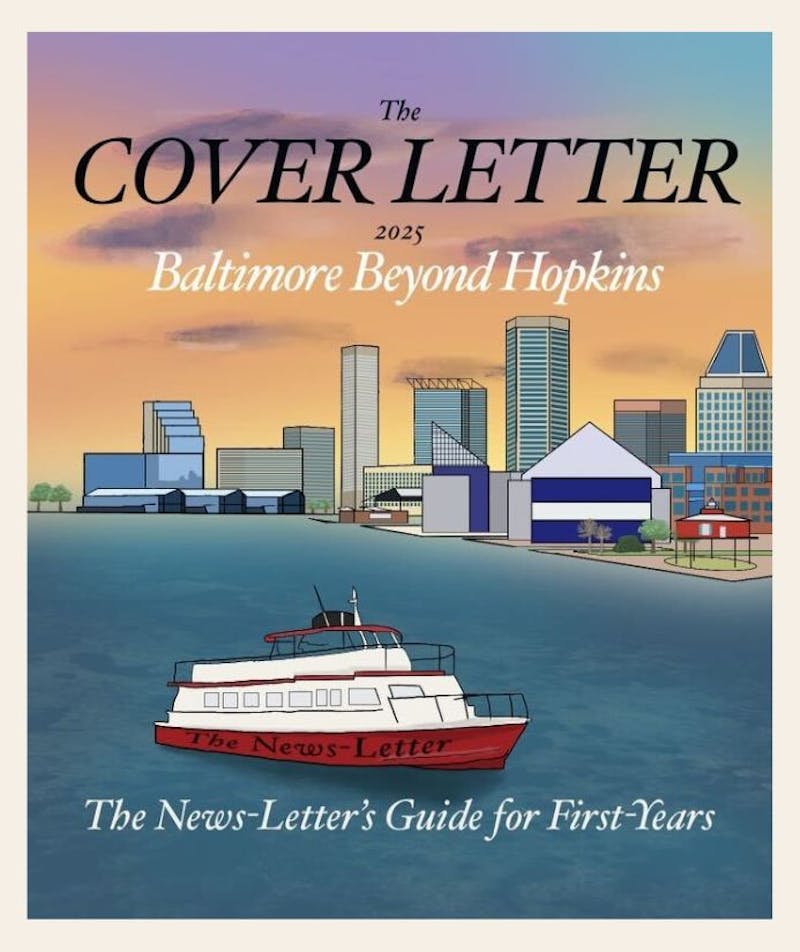"I don't have full confidence in a college that doesn't know how to spell John," Mark Twain said in a letter to a friend. President Brody enjoyed this joke so much that he made a commencement speech out of it, but it raises the question that most Hopkins undergrads will face perhaps more than even, "So you're going to be a doctor?" Why isn't it John Hopkins?
To find and answer one day I visited Johns Hopkins' grave. It was a gusty fall day, a good day for a graveyard trip, and sure enough, old Johns was there, under a large slab of marble. Next to the grave lay a crushed Natty Boh can. Poetic justice, I figured, for saddling generations of students with the inevitable "It's actually Johns, with an `s,' " reply. After a talk with the graying old graveyard superintendent, I realized it wasn't Johns' fault, at all.
It was his great-grandmother, Margaret Johns, who started the tradition of giving her surname as a first name. Poor Johns Hopkins. By the time he was born, he was the second to bear the name, and there was little he could do about it.
At least, he could rest assured that he had one thing going for him: at the time of his 1867 death, his bequest of $7 million to found Johns Hopkins University and Hospital was the largest philanthropic donation in United States history to date, roughly $83 million in today's dollars.
Sadly, he fell from the record books in 2005, beaten in his generosity by a man with a slightly less distinctive name: Michael Bloomberg, whose $200 million total donations eclipsed even the money provided by Johns Hopkins himself.
While Johns Hopkins the man may have taken a bit of a nosedive in the Fortune 500, Johns Hopkins, the university, still holds its records. At the risk of repeating the Admissions Department leaflets, Hopkins was the first research university in America, modeled after the German model, which, since it produced Wittgenstein, among others, must have been doing something right.
The first university to teach in seminars as opposed to solely lectures, Hopkins also introduced the concept of a `major' to the United States. So when you've switched it twelve times, you can thank your own school for developing the concept.
Hopkins began its life as a small campus in downtown Baltimore, but the school's trustees, perhaps anticipating a future Mayor of New York among their alumni, decided that space was too tight to expand. As luck would have it, the 140 acre backyard of Charles Carroll of Carrollton was available, and so the university relocated, snatching up Homewood House, a wedding gift from Carroll to his son.
Administrators liked the Georgian architecture of the wedding present so much that they copied it in building the remainder of the campus, most notably Gilman Hall, named for the first university president Daniel Coit Gilman, who, like our current U.S. president, was a Yale Skull and Bones-man. Part of Carroll's land had to be set aside for the pursuit of higher culture, so Hopkins sliced off a bit and gave it away to found the Baltimore Museum of Art.
The school was not finished setting records yet, however. The Black and Blue Jay, which is currently defunct, was the oldest college humor magazine in the country, founded in 1920, and created the Blue Jays as Hopkins' team name.
The News-Letter (shameless plug here) was founded in 1896 and is one of the oldest continuously published college newspapers in the country.
Ah yes, and before we close, one more record to make all of you feel better: 85 percemy of Hopkins undergraduates will receive a graduate degree and, yes, that's the highest of any school in the country. So don't panic, at least not yet. If nothing else, you've got Johns on your side.


